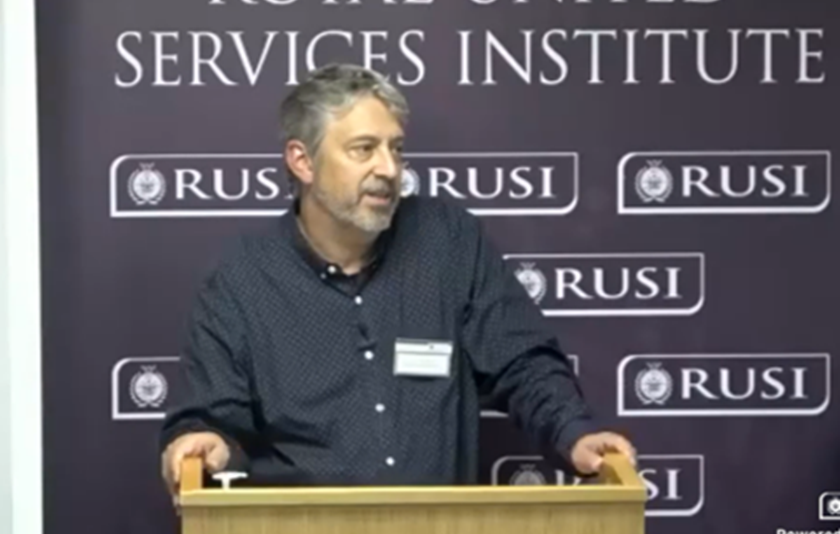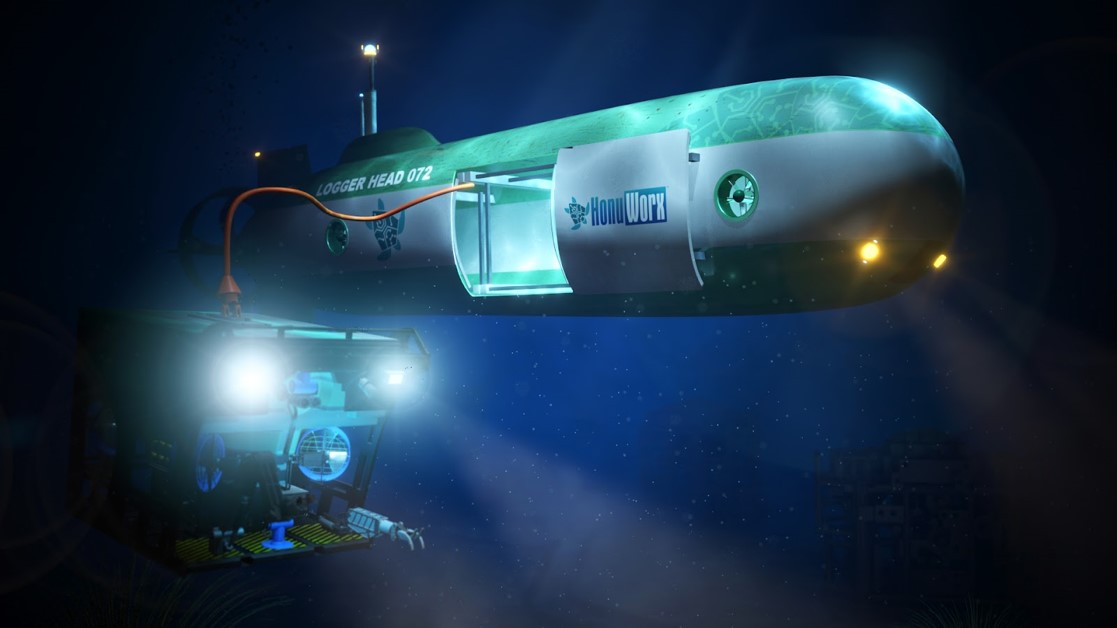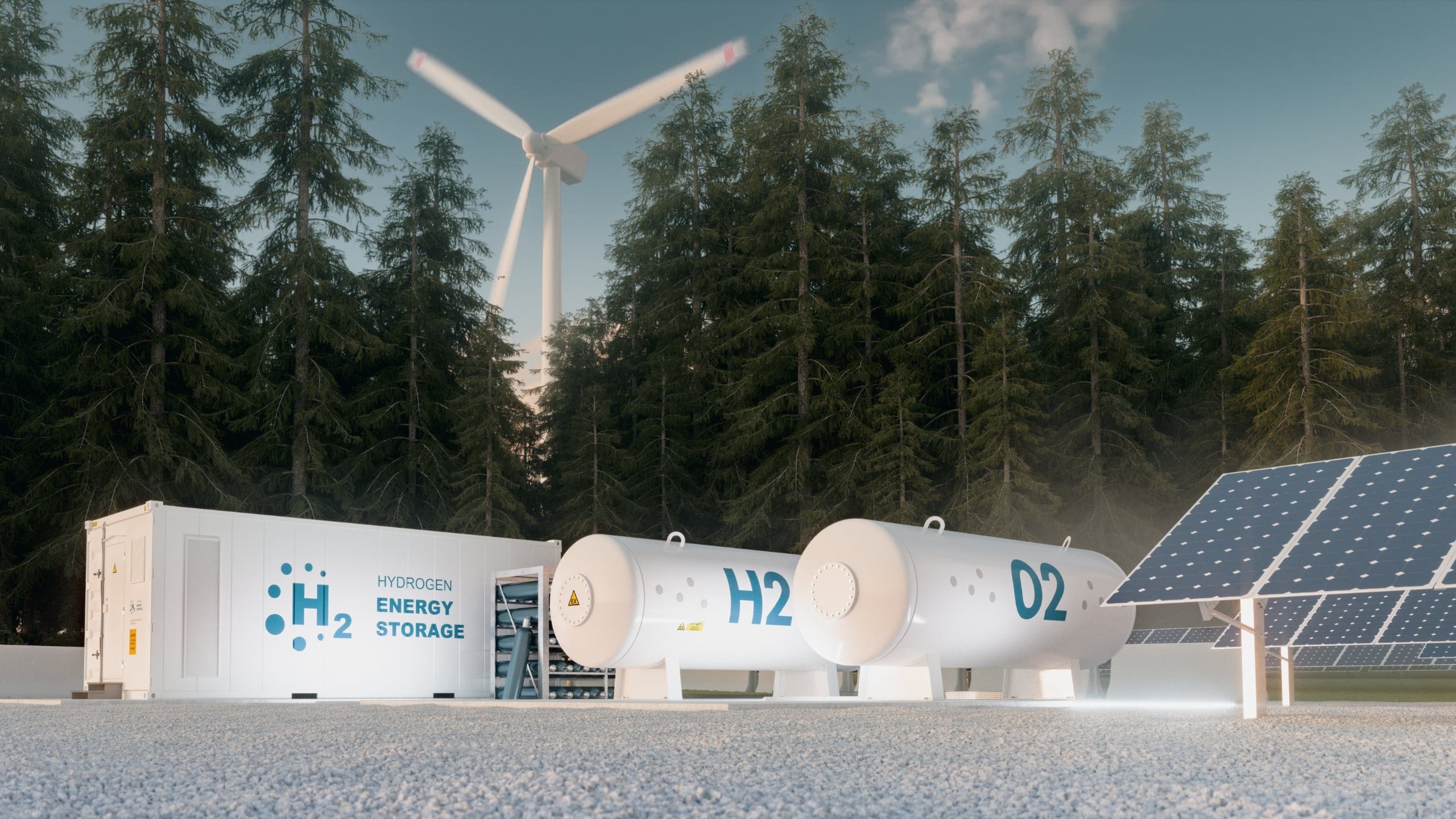NEWS & INSIGHTS | Opinion
The RUSI project: A secure and affordable energy transition

I had the honour of joining the advisory board for the RUSI’s project on UK National Security and the Net Zero Transition, and to speak at the project launch on September 8th.
As Sneha Dawda, who moderated the event, pointed out in her introduction, there are no winners with climate change, at least not in the long term. But in the short term there are national vulnerabilities related to the changing shape of the energy mix. We are seeing the impact of an excessive reliance on gas, in particular Russian gas, on European countries..
The RUSI project explores how reducing our reliance on fossil fuels may introduce new elements of complexity and insecurity, and how possibly mitigate them while decarbonising critical sectors.
The energy transition is not just about target or carbon targets, it is about secure access to energy at an affordable price, and it is also social equity and environmental equity.
Similarly, I would say that National Security is not just about critical infrastructure vulnerabilities or the defence sector. It is also about stability and economic prosperity. And that leads to the affordability and social and environmental equity elements of the Transition. So there’s a strong link.
But what does that mean in terms of technology for net zero and technology innovation? And how can we make the transition an anti-fragile system, to use the concept made popular by Nassim Taleb, so we can ensure resilience from a national security angle and from the energy transition angle?
If there are no winners with climate change in the long run, the key question when you look at the energy transition is who are the winners and losers from a short term geopolitical perspective. Or is a draw possible? I’ll come back to that.
Let’s first look at the technology: what technology do we need for the energy transition?
The industrial sector is moving ahead with various clusters developing carbon capture and storage, and switching fuels from gas towards sustainable fuels, mostly hydrogen. The UK is targeting 10 GW of hydrogen by 2050, with least 50% of that being green hydrogen (from electrolysis), which means that 5 GW will likely come from Blue Hydrogen (from gas reformation with associated carbon capture and storage).
Domestic heating, very important now that we are approaching a difficult winter for many, is looking at heat pumps, so electrification, but also at hydrogen when electrification is not possible, or when converting and reusing the existing gas network makes more economic sense. There will likely be some blending of hydrogen and natural gas in the short term.
If we look at power, it’s about renewables, more wind than sun in the UK, but nuclear is also having a resurgence of attention, with Small Modular Reactors (SMRs) as an alternative to traditional plants, and significant and promising research going into nuclear fusion, which is anyway a few years away. The UK Energy Security Strategy targets 50 GW of offshore wind by 2030, including at least 5GW floating offshore wind, and aims to fulfil 25% of electricity demand from nuclear by 2050.
Most road transport is likely to be electric, but fuel cell vehicles, running on hydrogen, will play a part as well, especially for return to base fleet and heavy good vehicles, or buses. For example Aberdeen has now a fleet of about 20 hydrogen buses plus other council fuel cells vehicles.
Air transport, which is particularly difficult to decarbonise, is moving to sustainable aviation fuels (SAF), with Direct Air Capture used to create synthetic fuels that don’t add to the emission, but also looking at hydrogen, and at batteries for very short hauls.
Shipping is also difficult to decarbonise. It is also often unclear where the emissions are counted as a lot of those happen in international waters. There are different options, with ammonia or biomethanol probably the most likely candidates to replace marine fuel. Again, hydrogen and battery have also a role to play in some routes.
Let’s not forget that in addition to replacing fossil fuel, a lot can be done to reduce demand, and here a key role will be increasingly played by digital technology enabling efficiency and optimisation, both in industrial and in private and domestic energy demand.
So all sectors will and have to go through a massive overhaul to get to near zero, and all the sectors will be much more interconnected and less siloed than today – more of a real energy system. Carbon capture can be used to sequester emission from industry, but then that infrastructure can also be used for blue hydrogen production. Blue hydrogen can also be a bridge and integrated with Green Hydrogen, at least in the short-mid term, while green hydrogen grows beyond being complementary to renewables electricity.
What does that mean from a National Security perspective? Which vulnerabilities do we need to be watching for? And how does geopolitics play into it?
The supply chain is a good place to start. The offshore wind in the UK is a success story. Until recently, it had the largest installed wind capacity and it is still second to China only. But from a supply chain perspective, most of it has been imported. That is changing, the Scotwind licensing round required a certain amount of local content, but still there is dependency on importing main components..
The Kincardine wind farm off the Aberdeen coast is the largest floating windfarm in the world. It was engineered in Spain, the turbines supplied from Denmark, the floating foundations provided from and American company and fabricated in Spain, and the turbines were mounted to foundation in The Netherlands and then towed to Aberdeen.
Looking at solar, which is another key element of the energy transition, we see that China’s share in all manufacturing stages of solar panels exceeds 80%. And also the production of many of the minerals used in photovoltaics is highly concentrated, with China again being in a dominant role.
The International Energy Agency (IEA) estimated that the photovoltaic industry demand for critical materials would have to expand 150 to 400% by 2030, from last year level to obtain the zero trajectory. That could increase dependencies and concerns from a national security perspective. Similar consideration, with some differences, can be made for the minerals required for batteries.
A second element to consider in the Energy Transition impact on National Security is ownership. In the current energy system, dominated by fossil fuels, the assets are the reservoirs. That’s where the hydrocarbon is, the country owns it and gives licences to extract it.
In renewables we could look at wind itself as the asset, or we can consider the real asset is the technology to produce electricity from wind. There are obviously places more windy than others, Scotland for example has approximately 25% of offshore wind capacity in Europe. But if we look at the aviation industry for example we know that engines are not sold to the airlines, but provided and charged at a pay per use rate. They are also obviously maintained, and remotely monitored by the manufacturers regardless of where they are.
If wind components are supplied from outside the country, remotely operated and controlled by the WTG OEM, what does that mean from a national security point of view? These are new questions for the energy sector.
I would add a third element, technology innovation. We need to look hard at innovation. We often hear that we have all the technology for the energy transition. While wind, solar, hydrogen and CCS are all technologies available today, we need to recognise they also have a lot of room for improvement. I often compare them to car manufactured in the 50s (but feel free to choose the 30s or the 60s). They solved the individual mobility problem and could take you pretty much anywhere you needed to go, but compare them to modern zero emissions vehicles, with self-driving and self-parking ability, security level, energy efficiency, maintenance requirements etc and it is almost a different world.
And it will indeed be a different world as a lot will be innovated, the question is where and by whom. Once again the question is who are going to be the winners and losers. Who invests more in energy transition related IP today and is therefore more likely to reap the rewards tomorrow?
Data from the IEA’s report on World Energy Investment 2022 show that China was the largest source of public energy R&D in 2021, closely followed by Europe and North America. China also has the fastest R&D spending growth and is estimated to substantially outspend European Union and United States by 2025.
Just as an example, looking at hydrogen and electrolysis technology, which is very relevant because of the potential role of hydrogen in decarbonizing UK industry, China is leading by far with 5383 patents families since 2005. Japan is second with 1,229, with the UK only having 139. Interestingly only 3% of China’s patents are international, with the rest only protected in China. International filing is led by Japan, the USA and Germany – with a combined 52% of all international filings.
With innovation happening at such a pace, what are the national security implications of a disruptive technology from other countries becoming predominant, or essential, in the new energy world? Will the concern of dependency on foreign technology slow down the energy transition on security ground, or will it raise security risk ? The Huawei ban in the Telecommunications sector provides an example, although as important as better, faster and reliable communications is, the urgency of the transition is driven by the climate emergency we are facing. Can we really afford to slow it down on national security grounds?
I mentioned winners and loser a lot, but could it be a draw? Or a Win-Win option? In the end there is one planet, one atmosphere, and it really knows no boundaries. And we all share the one carbon budget, which is how much greenhouse gas we can still emit before we locked global warming beyond 2 degrees Celsius and the effects becomes irreversible. Some of them already are.
Win-Win , or draws, are difficult though. COP26 saw hard discussions about the wording to use for coal to avoid the agreement to fail at the very last minute. And draws are also fragile. We have recently seen pulling out of the collaboration on climate agreed with the USA just last November, after the increased tensions on Taiwan.
The COP process is still probably the best and only shot at this win-win / draw outcome, and I’m looking forward to cop 27 and to progress on that front, as difficult and fragile as it will be.
To conclude, I see three open questions we need to address, and hopefully this project will help:
The first is about what level of control or risk of foreign dependency do we have on the technologies for the energy transition. Where are they patented, manufactured and serviced from?
The second is about how these technologies are going to redefine the global geopolitics in the medium-long term.
And finally, do we have the necessary focus on innovation to develop the capabilities for the transition and fill the gap from the oil and gas industry jobs in supply chain and achieve what needs to be a just transition?
But probably the more fundamental question I have is: how do we avoid the trap of seeing national security and a fast paced energy transition as alternative or adversarial options, and embrace instead a vision that combines them and helps achieving both at the urgent pace required.
Subscribe for the latest updates




